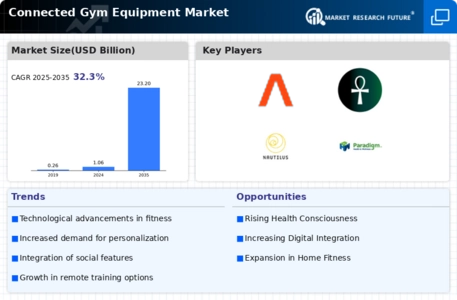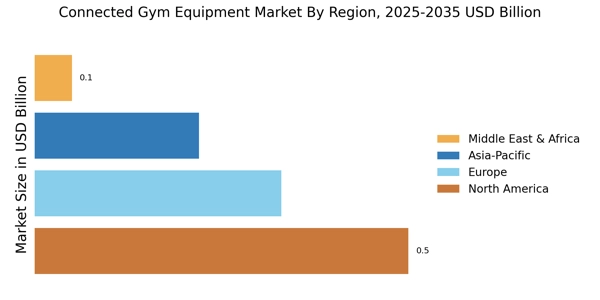Leading market players are investing heavily in research and development in order to expand their Product lines, which will help the Connected Gym Equipment Market, grow even more. Market participants are also undertaking a variety of strategic activities to expand their global footprint, with important market developments including new product launches, contractual agreements, mergers and acquisitions, higher investments, and collaboration with other organizations. To expand and survive in a more competitive and rising market climate, Connected Gym Equipment Industry must offer cost-effective items.
Manufacturing locally to minimize operational costs is one of the key business tactics used by manufacturers in the global Connected Gym Equipment Industry to benefit clients and increase the market sector. In recent years, the Connected Gym Equipment Industry has offered some of the most significant advantages to medicine. Major players in the Connected Gym Equipment Market, including Brunswick Corporation, Core Health & Fitness LLC, Draper Inc., EGYM, Johnson Health Tech Co.
Ltd., Les Mills International Ltd., Nautilus Inc., Paradigm Health & Wellness, Precor Incorporated (Peloton Interactive Inc.), Technogym S.p.A and TRUE Fitness Technology Inc., are attempting to increase market demand by investing in research and development operations.
Nautilus Inc. (Nautilus) is a marketer, developer, and producer of fitness and health products that provides attachments for items for strength and cardio. It distributes its goods through a wide network of independent and niche stores. The company's product line consists of equipment for both cardio and strength training, such as treadmills, ellipticals, exercise bikes, dumbbells, kettlebells, and barbells, as well as accessories, home gyms, weight benches, and dietary supplements. Online retailers include schwinnfitness.com, nautilus.com, bowflex.com, and bowflex.ca. Nautilus, Inc. will introduce the New Bowflex® BXT8J Treadmill with JRNY® Adaptive Fitness App in September 2022.
The Johnson Health Tech Co., Ltd. produces and sells a range of exercise gear for both commercial and residential use. Treadmills, ellipticals, air rowers, recumbents, uprights, and steppers are among the company's offerings. The world over, Johnson Health Tech has distributors. Johnson Health Tech (JHT), a former distributor for JHT, announced in June 2022 that it had acquired the fitness section of Cravatex Brands Limited. As a result, JHT is now the first manufacturer of exercise equipment to have a wholly-owned subsidiary in India.


















Leave a Comment